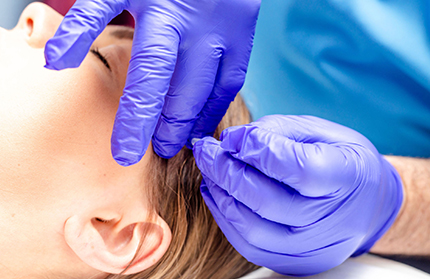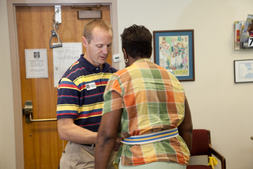Being the 5th leading cause of death in the U.S., a stroke occurs when the blood vessels that supply blood to the brain is blocked. A stroke is, therefore, an acute neurological event that affects the central nervous system functions. According to its causes, strokes are usually classified into two different types:
- Hemorrhagic stroke: This occurs when a blood vessel bursts in the brain.
- Ischemic stroke: This occurs when there is a blockage of a blood vessel supplying blood to the brain and constitutes 80% of stroke cases.
In some cases, there is a physical event that often begins exactly like the stroke but then resolves without symptoms or significant deficit. This is called “Transient Ischemic Attack” and is a warning that the person is at risk of stroke. It should be noted that strokes are the leading cause of severe disability in adults, and the rehabilitation professionals are often responsible for designing a program that serves to try to overcome disability in different health care settings, either at hospitals or home. Rehabilitation programs primarily involve the application of certain techniques of physical therapy, occupational and speech therapy, according to the type and degree of disability, which can be in singly or in combination use (conventional techniques, neuromuscular techniques, facilitation techniques, biofeedback, etc.).
Physical therapy should begin as soon as the patient is stable, and if possible two days after the stroke. Some patients experience a more rapid improvement in the early days, and many of them continue to improve in the next six months or more. Physical therapy teaches the patient how to walk, sit, change position, etc. through exercises and physical manipulation of the patient to restore movement, balance and coordination. In physical therapy, physical therapists evaluate each patient who has suffered a stroke to determine their ability to perform certain activities, such as standing, sitting, driving a wheelchair and walking. The goal of physical therapy is to:
- Define problems,
- Develop a treatment program
- Set objectives.
Treatment programs are made for each patient according to their needs. Programs may include:
- Activities that reduce stiffness teach correct movement patterns and improve posture and balance.
- Developmental sequence, which is a progression of activities where emphasis on correcting posture, balance, and coordination is done. It is important that patients begin to control these activities before attempting to stand or walk.
- A therapy pool, generally used as adjunctive therapy to reduce pain and stiffness and to improve balance, coordination, and strength.
- Strengthening exercises, where different devices are used to achieve strength and endurance strengthening muscles.
- Management of wheelchair to educate the patient on how to move from bed to wheelchair, into the car, to the toileting, etc.
- Frequent assessments to determine when a patient has acquired sufficient strength, muscle control, and balance to start walking.
- Adaptive equipment that helps the patient to perform movements.


